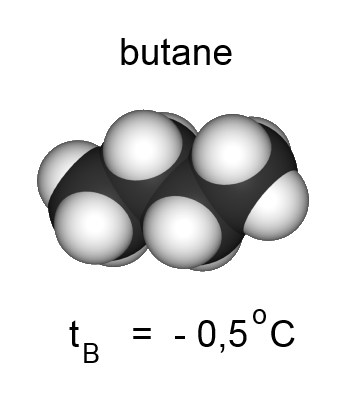





The boiling points of noble gases are as follows:
| teb(oC) | |
| He | -269 |
| Ne | -246 |
| Ar | -186 |
| Kr | -152 |
| Xe | -108 |
| Rn | -62 |
In this series the number of electrons increases and therefore the atomic radius too. The more electrons we have, the larger will be the distance where they can move and the bigger will be the temporary dipoles and the van der Waals forces. The boiling point increases with the atomic radius.
Big non-polar molecules have higher boiling points than small non-polar molecules.
Long and "thin molecules" can have bigger temporary dipoles than "compact" molecules because the radius where the electrons move is bigger. Moreover, their mutual contact surface will be larger.


Long non-polar molecules have higher boiling points than "compact" non-polar molecules